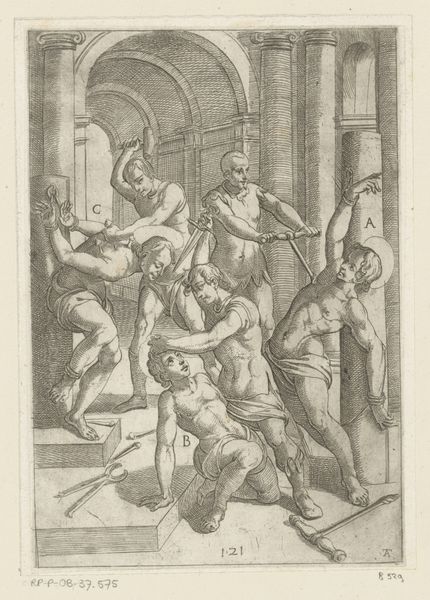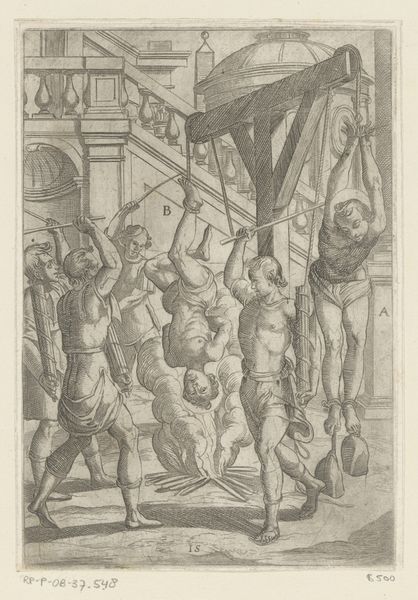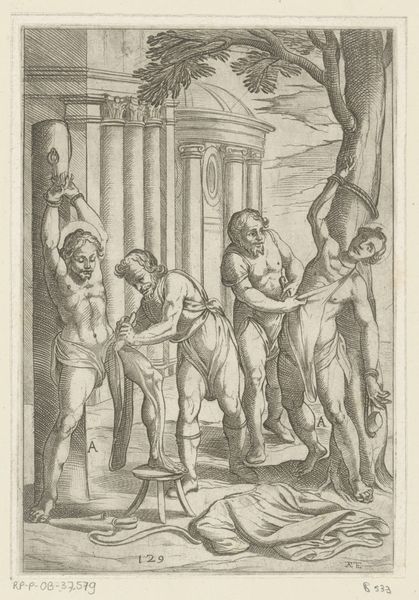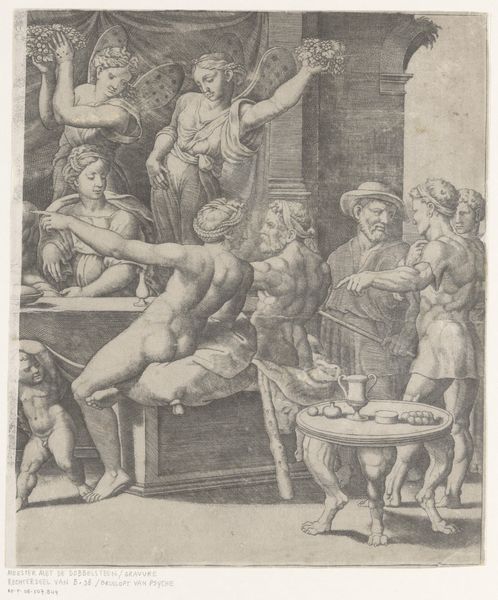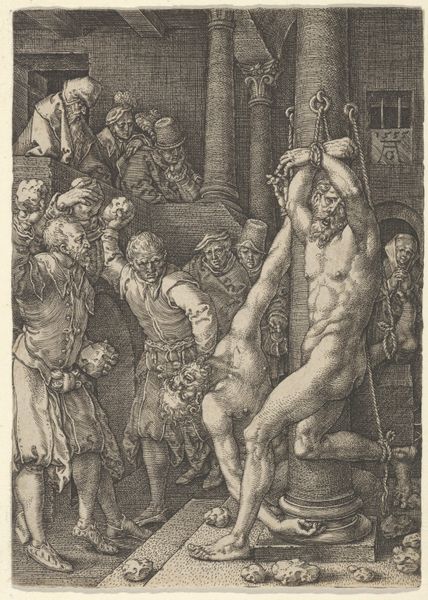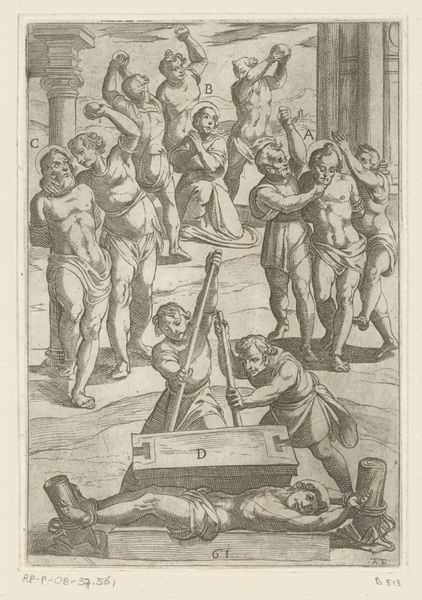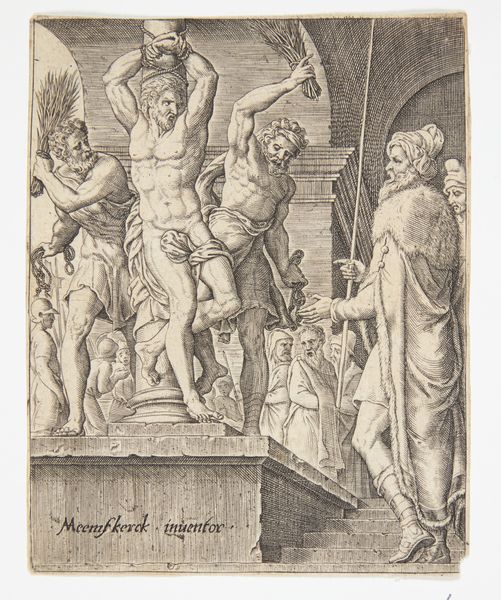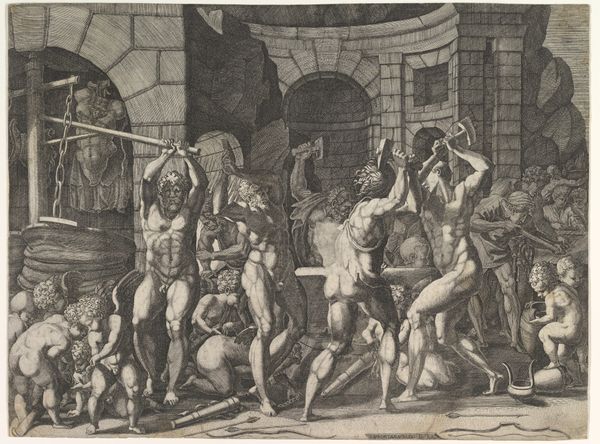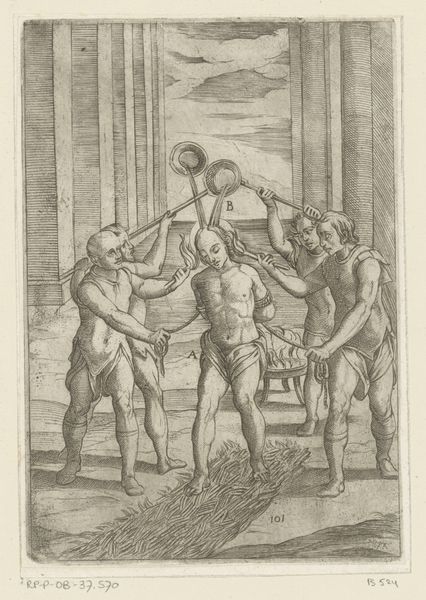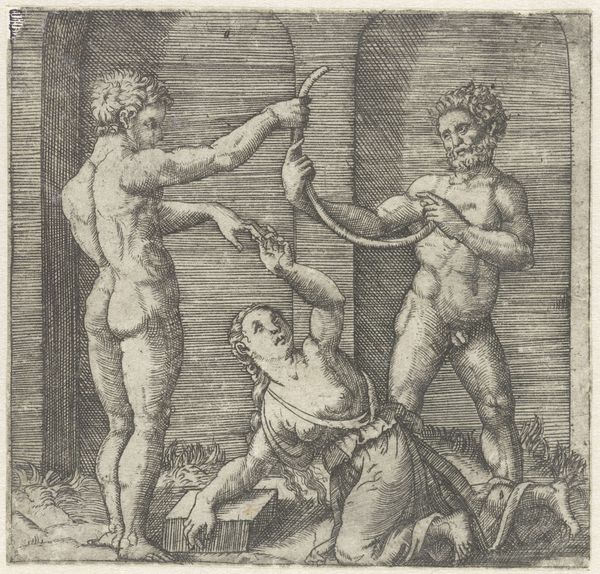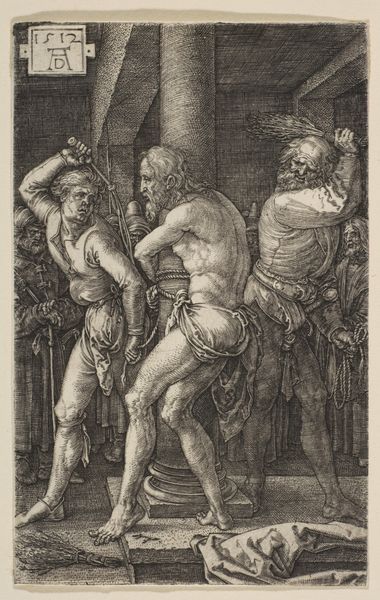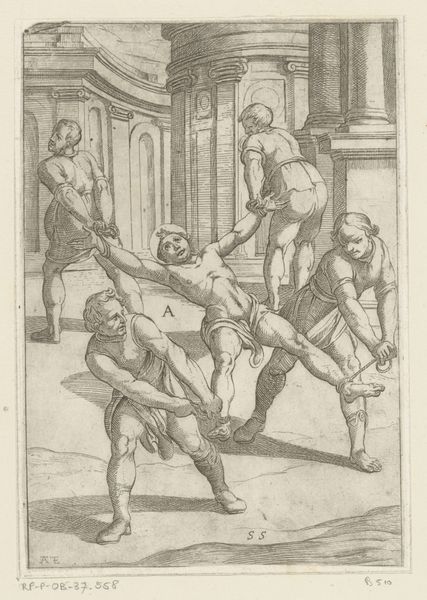
Het slaan van drie heiligen met rug aan elkaar vastgebonden 1565 - 1630
0:00
0:00
antoniotempesta
Rijksmuseum
print, engraving
#
medieval
#
baroque
# print
#
pen sketch
#
old engraving style
#
figuration
#
history-painting
#
engraving
Dimensions: height 194 mm, width 133 mm
Copyright: Rijks Museum: Open Domain
Curator: Before us, we have an engraving titled "The Beating of Three Saints Tied Back to Back," attributed to Antonio Tempesta, dating from sometime between 1565 and 1630. Editor: The brutal energy jumps right out. The composition is dominated by these looming figures poised to strike. There's a real sense of compressed space. Curator: Absolutely. This work needs to be understood through the lens of the Counter-Reformation. Images like this functioned as potent reminders of faith and resilience in the face of religious persecution, celebrating martyrdom as resistance. Consider the power dynamics—the bodies of the saints, bound and vulnerable, versus the aggressive stances of their tormentors. Editor: From a purely formal standpoint, observe how Tempesta uses hatching and cross-hatching to create volume and shadow. The line work is incredibly precise, even if the perspective seems slightly skewed by modern standards. See the dramatic diagonals of the staves about to descend, contrasted against the more vertical lines of the classical architecture in the background. Curator: Yes, and the classical setting—while seemingly detached—also situates this violence within a framework of historical power, hinting at how state and religious authorities throughout time have colluded in oppression. It reflects Tempesta's historical context and prompts questions about the intersections of power, faith, and resistance within his art. What narrative choices lead viewers to contemplate complicity within violence? Editor: The architectural elements provide an ironic contrast—order and reason against pure, unadulterated violence. Even the varying levels of finish and detail invite layered interpretation, the men rendered roughly and the building quite carefully. It is less about specific depiction than expressive arrangement and evocation. Curator: Indeed. Thinking about the broader social impact, such depictions helped to reinforce boundaries between the "faithful" and the "heretical," shaping religious identities in ways that continue to reverberate. These historical narratives have been used to justify violence against marginalized groups even today. Editor: Examining it has clarified how, even in scenes of turmoil, the artist's command of line and form contributes to a resonating image. Curator: Precisely, acknowledging its continued cultural significance means exploring its legacy, confronting how it contributes to both the construction of narratives of violence and their active deconstruction.
Comments
No comments
Be the first to comment and join the conversation on the ultimate creative platform.
